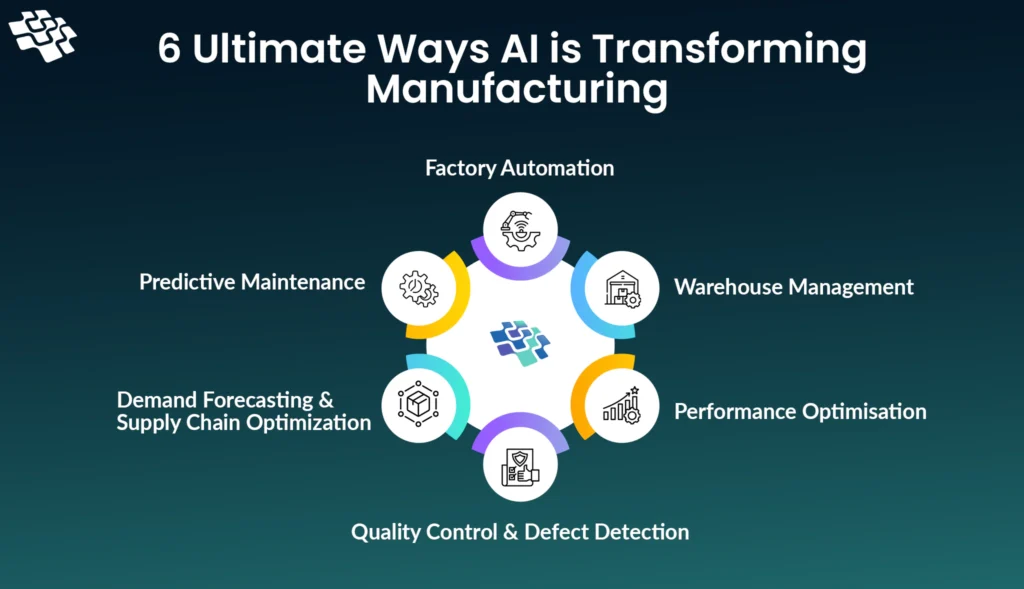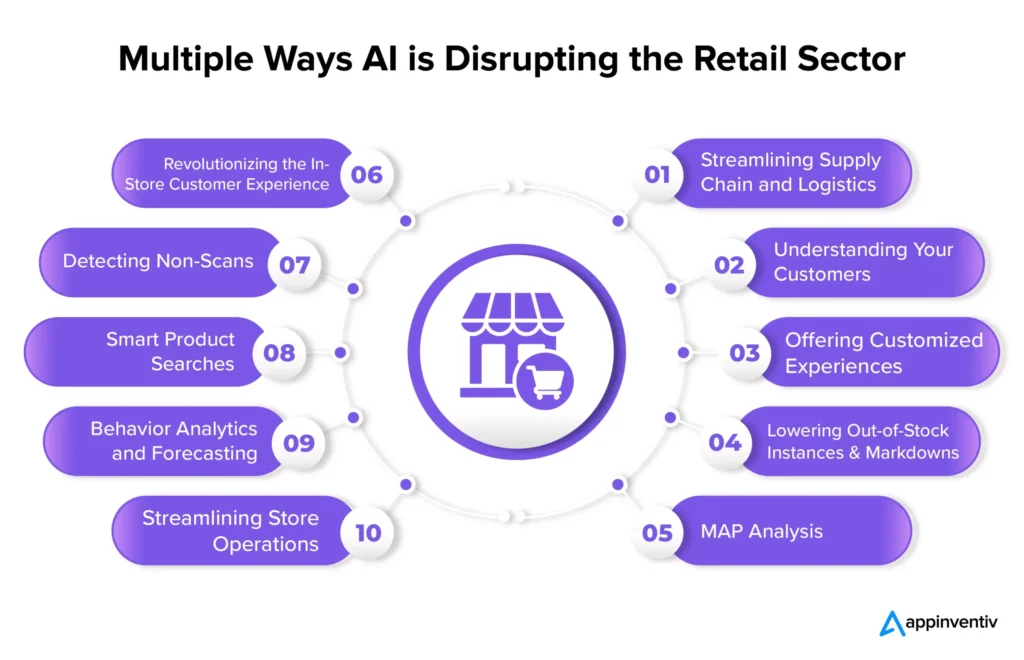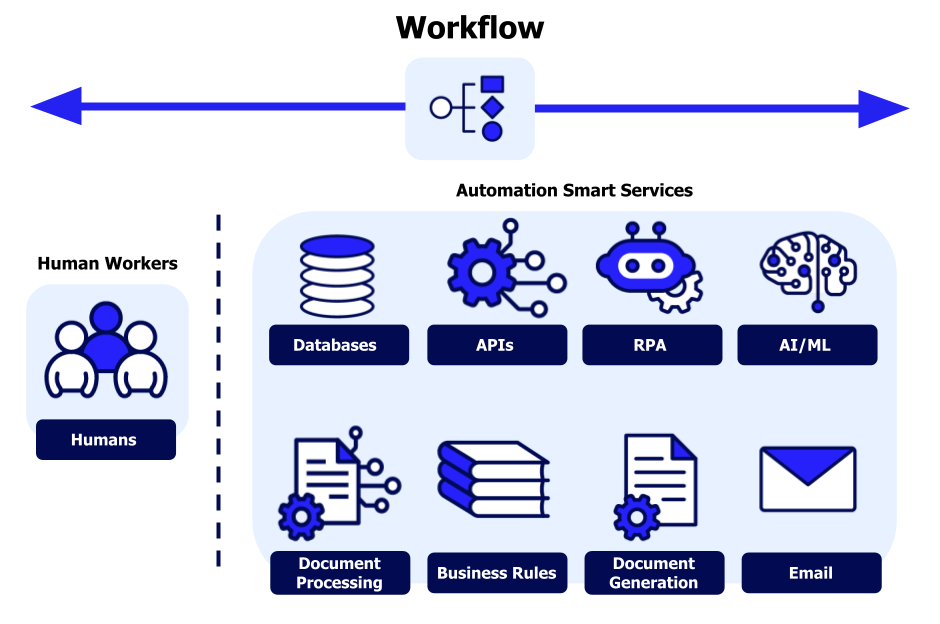Recent Posts
- The Future of Healthcare: Benefits of Telehealth Services
- Powering Digitization in Saudi Arabia With Pharmacy Fulfilment Software
- How Dash Revolutionized Deliveries With Our In-House Logistics Systems
- How IMA Increased Sales Productivity by 45% Using Dynamic AI Workflows – Powered by Nuero
- Bridging web2 with web3: A Case Study
Recent Comments

AI in Business: How to Maximize Dynamic Workflows
AI in Business changing the way companies operate by automating processes, optimizing decision-making, and enabling more dynamic workflows across various sectors. In a competitive market where efficiency and adaptability are key to success, AI-driven workflows offer significant advantages, helping businesses streamline operations, enhance productivity, and improve overall performance. This paper explores how businesses across different industries can leverage AI to maximize dynamic workflows, with a focus on sectors such as manufacturing, healthcare, finance, retail, and logistics.
The Role of AI in Business Workflows
AI in Business is introducing automation, predictive analytics, machine learning, and natural language processing into daily operations. These technologies enable businesses to process vast amounts of data in real time, identify patterns, and make more informed decisions. Dynamic workflows powered by AI are flexible, adaptive, and can respond to changing conditions quickly, ensuring that businesses remain agile in a fast-paced environment. The most successful implementations of AI focus on automating repetitive tasks, optimizing resource allocation, and improving collaboration across teams and departments. By integrating AI into core business processes, companies can free up human resources for more strategic activities, enhance operational efficiency, and drive innovation.
Key Sectors Leveraging AI for Dynamic Workflows
Manufacturing: AI Driven Automation and Predictive Maintenance
In the manufacturing industry, AI has been instrumental in improving production workflows. AI-powered automation systems can optimize assembly lines, reduce downtime, and improve overall efficiency by automating repetitive tasks such as quality control and materials handling. Robotic process automation (RPA) is being used to enhance precision in production and increase output.
One of the most critical applications of AI in manufacturing is predictive maintenance. By analyzing data from IoT sensors embedded in machinery, AI can predict equipment failures before they occur. This proactive approach minimizes downtime, reduces maintenance costs, and extends the lifespan of critical assets. AI-driven dynamic workflows enable manufacturers to optimize production schedules, allocate resources more efficiently, and reduce waste, contributing to leaner operations.

Healthcare: AI-Enhanced Decision-Making and Workflow Automation
The healthcare sector is experiencing a shift towards AI-powered workflows that enhance decision-making, streamline patient care, and improve clinical outcomes. AI algorithms analyze patient data, medical records, and diagnostic imaging to assist healthcare professionals in making more accurate diagnoses and treatment recommendations.
AI also plays a crucial role in automating administrative tasks such as appointment scheduling, billing, and patient record management. These automated workflows reduce the administrative burden on healthcare staff, allowing them to focus more on patient care. In addition, AI-driven telehealth platforms enable more efficient communication between patients and providers, facilitating e-consultations and remote monitoring.
By optimizing workflows, healthcare organizations can improve patient outcomes, reduce operational costs, and ensure timely care delivery.
Finance: AI-Optimized Risk Management and Fraud Detection
The finance industry has been one of the early adopters of AI, using it to enhance workflows in areas such as risk management, fraud detection, and algorithmic trading. AI-driven dynamic workflows in finance allow for the real-time analysis of large datasets, providing valuable insights that can help financial institutions make informed investment decisions, optimize asset allocation, and manage risks more effectively.
AI-based fraud detection systems can monitor transactions for anomalies, flagging suspicious activities in real time. These systems continuously learn from new data, improving their ability to detect fraud and protect sensitive financial information. Dynamic workflows in finance also involve automating back-office tasks, such as document processing and compliance checks, increasing operational efficiency and reducing the potential for human error.
Retail: Personalization and Supply Chain Optimization
In the retail industry, AI-powered workflows are helping businesses deliver personalized customer experiences and optimize supply chain operations. AI systems analyze customer behavior, purchase history, and preferences to create personalized product recommendations, targeted marketing campaigns, and dynamic pricing strategies. This level of personalization enhances customer engagement and drives sales.
AI also improves supply chain management by forecasting demand, optimizing inventory levels, and improving logistics. For instance, dynamic workflows powered by AI can help retailers ensure that products are delivered to customers on time, while reducing the risk of overstocking or stockouts. In e-commerce, AI is streamlining order fulfillment processes, enhancing warehouse management, and enabling real-time tracking of shipments.

Logistics: AI-Powered Route Optimization and Demand Forecasting
Logistics and transportation companies are using AI to optimize dynamic workflows related to route planning, fleet management, and demand forecasting. AI-driven route optimization algorithms analyze traffic data, weather conditions, and delivery schedules to determine the most efficient routes for shipments. This not only reduces fuel consumption and delivery times but also minimizes the carbon footprint of logistics operations.
Additionally, AI can predict fluctuations in demand based on historical data, market trends, and external factors such as economic conditions. By incorporating AI-driven demand forecasting into their workflows, logistics companies can better allocate resources, optimize capacity utilization, and ensure timely deliveries. This level of operational efficiency is critical for maintaining a competitive edge in the logistics industry.
Best Practices for Maximizing AI in Dynamic Workflows
To maximize the benefits of AI in dynamic workflows, businesses must adopt best practices that align with their goals and operational needs. The following are key considerations for businesses looking to integrate AI into their workflows effectively:
Leverage Data to Drive AI Performance
Identify Key Workflow Areas for AI Integration
The first step in maximizing AI is identifying the specific workflows that will benefit most from AI-driven automation and optimization. Businesses should assess their operations to determine which repetitive, time-consuming tasks can be automated and where AI can provide valuable insights for decision-making. Focus on high-impact areas that will yield the greatest return on investment.
AI systems are only as effective as the data they are trained on. Businesses should prioritize data collection, ensuring that they have access to clean, accurate, and comprehensive datasets. This data will fuel AI algorithms and enable them to make more accurate predictions, identify patterns, and optimize workflows dynamically. In sectors like healthcare and finance, where sensitive data is involved, businesses must also ensure compliance with data privacy regulations.
Foster Collaboration Between AI and Human Expertise
Continuously Monitor and Improve AI Workflows
AI is not a replacement for human workers but a tool that enhances their capabilities. Businesses should foster collaboration between AI systems and human teams to create dynamic workflows that capitalize on the strengths of both. For example, AI can handle data analysis and automation, while human employees focus on strategic decision-making, creative problem-solving, and customer relations.
AI-driven workflows must be continuously monitored and optimized to ensure they remain effective and adaptable to changing conditions. Businesses should establish a process for regularly evaluating the performance of AI systems, gathering feedback from users, and making necessary adjustments. This iterative approach ensures that AI workflows remain dynamic and continue to deliver value over time.
Conclusion: Unlocking the Full Potential of AI in Business Workflows
AI in Business has the potential to revolutionize business workflows by introducing dynamic, adaptive systems that improve efficiency, reduce costs, and enhance decision-making across various industries. Whether it’s optimizing manufacturing processes, improving patient care in healthcare, enhancing risk management in finance, personalizing customer experiences in retail, or streamlining logistics, AI-driven workflows are reshaping how businesses operate.
By adopting best practices and focusing on key workflow areas for AI integration, businesses can maximize the value of AI and unlock new levels of productivity and innovation. At Neuro, we specialize in designing AI solutions tailored to the unique needs of businesses across industries, allowing them to fully harness the power of AI to create dynamic, future-ready workflows.
A report by Forbes noted “It can redesign workflows by integrating industry best practices to optimize operations.”

- No Comments
- Leave a comment

